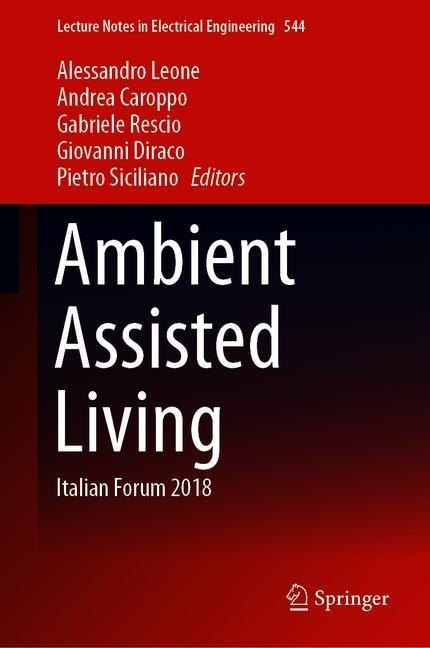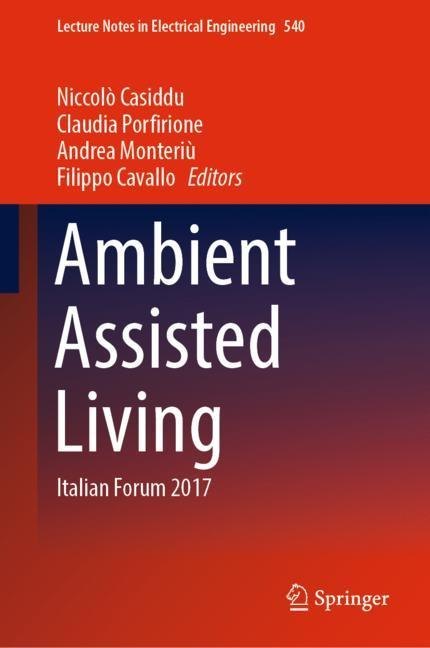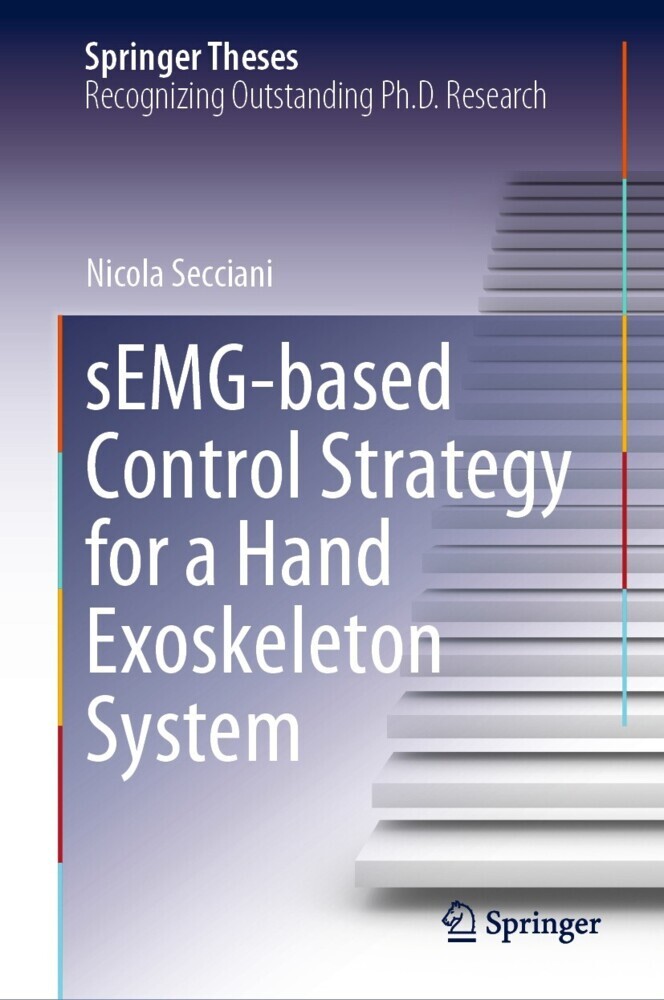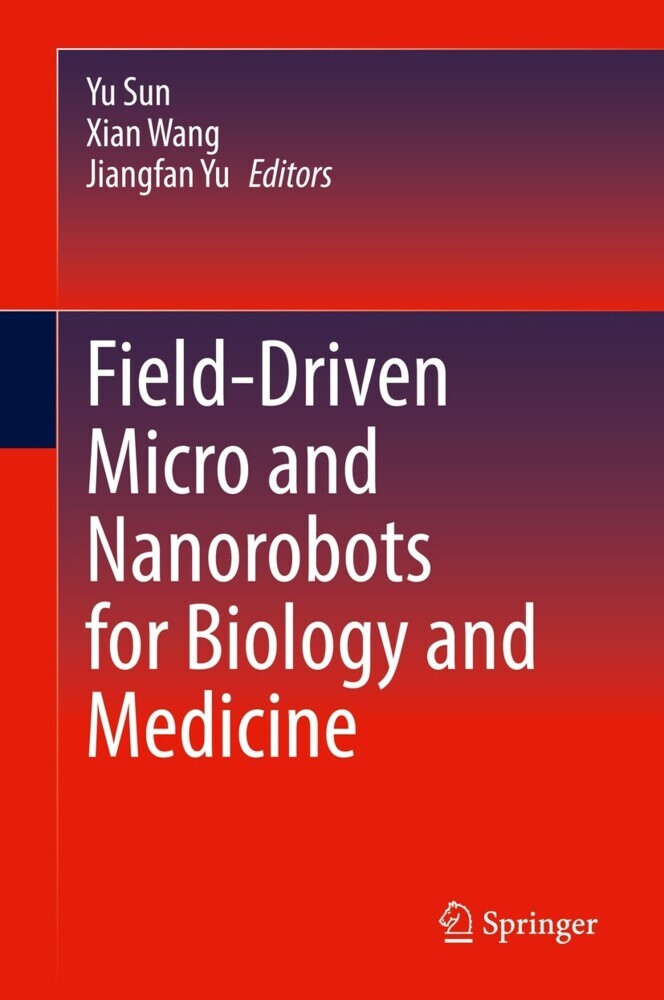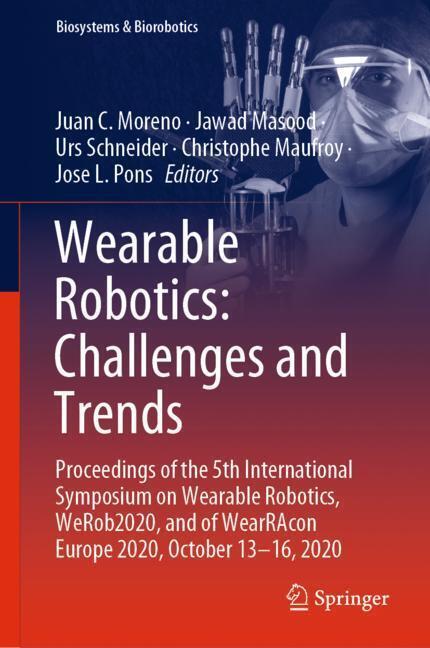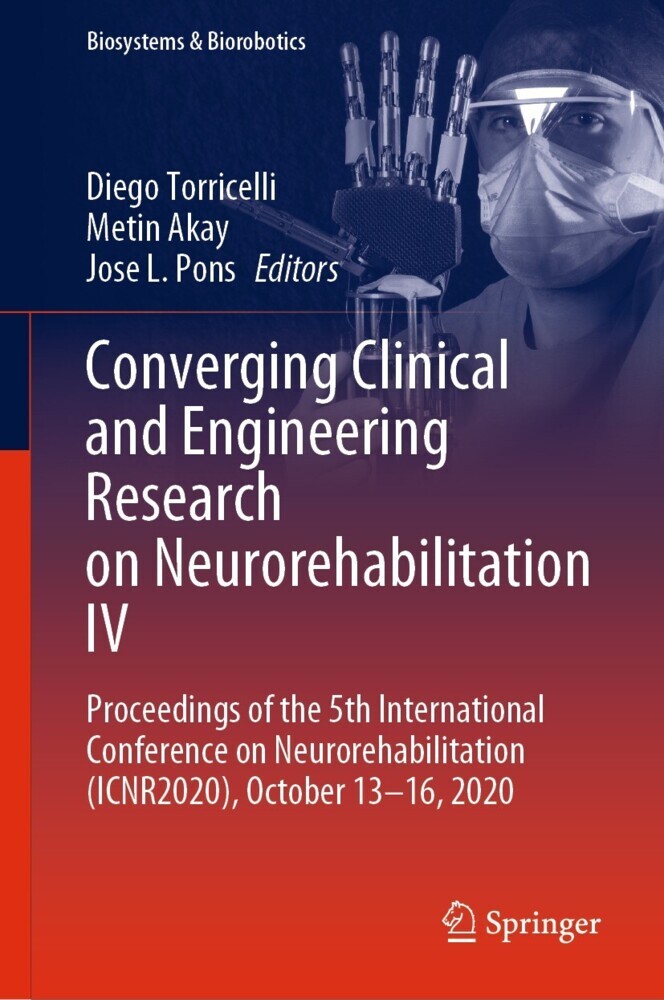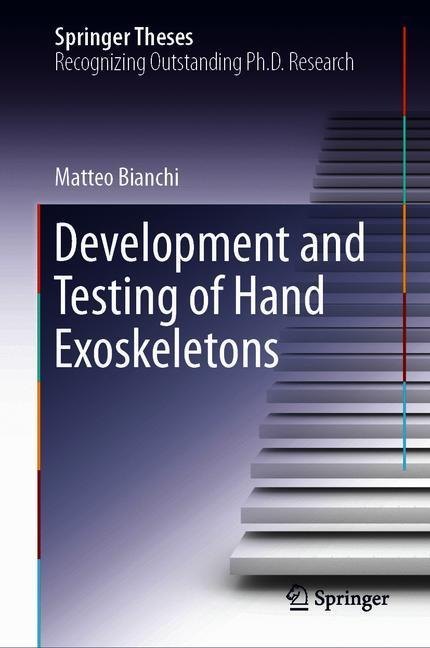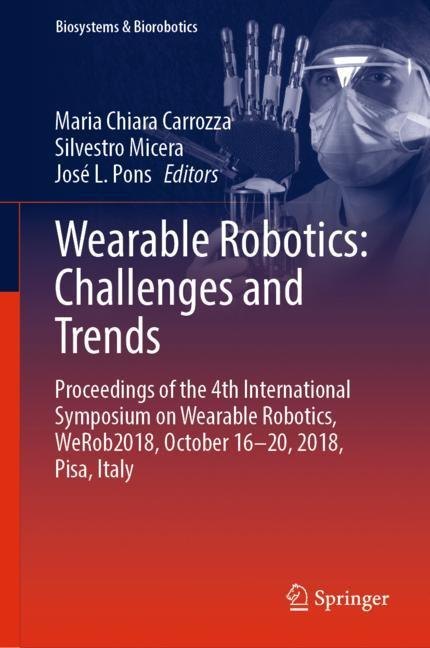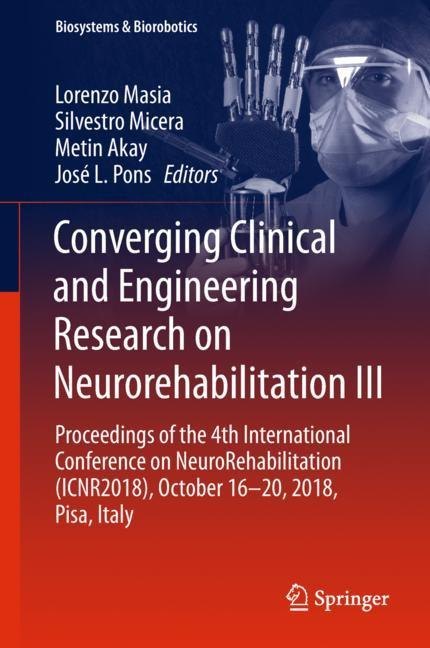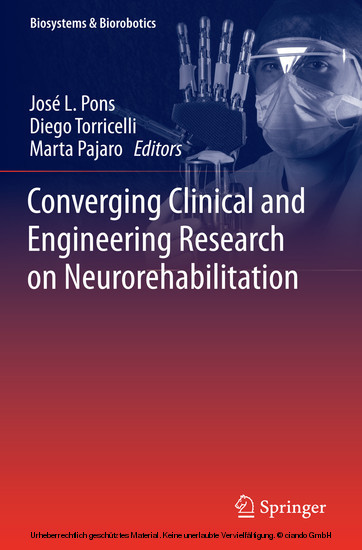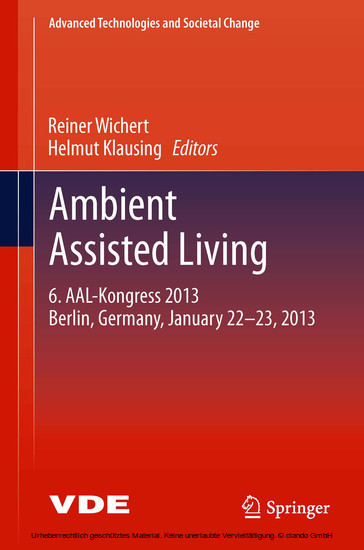Ambient Assisted Living
Italian Forum 2018
This book documents the state of the art in the field of ambient assisted living (AAL), highlighting the impressive potential of novel methodologies and technologies to enhance well-being and promote active ageing. The coverage is wide ranging, with sections on care models and algorithms, enabling technologies and assistive solutions, elderly people monitoring, home rehabilitation, ICT solutions for AAL, living with chronic conditions, robotic assistance for the elderly, sensing technologies for AAL, and smart housing. The book comprises a selection of the best papers presented at the 9th Italian Forum on Ambient Assisted Living (ForitAAL 2018), which was held in Lecce, Italy, in July 2018 and brought together end users, technology teams, and policy makers to develop a consensus on how to improve provision for elderly and impaired people. Readers will find that the expert contributions offer clear insights into the ways in which the most recent exciting advances may be expected to assist in addressing the needs of the elderly and those with chronic conditions.
1;Preface;6 2;Contents;8 3;Models and Algorithms;13 4;A Personalised Virtual Coach to Counteract Ageing Decline: The H2020 NESTORE Project;14 4.1;1 Introduction;15 4.2;2 The Wellbeing Dimensions of NESTORE;16 4.3;3 Scope of NESTORE and Key Innovations;17 4.4;4 The NESTORE Methodological Approach and Validation;18 4.5;5 Cost-Effectiveness and Sustainability of NESTORE;20 4.6;6 Conclusions;21 4.7;References;22 5;Multi-domain Model of Healthy Ageing: The Experience of the H2020 NESTORE Project;23 5.1;1 Introduction;24 5.2;2 NESTORE Model of Healthy Ageing;24 5.3;3 Physiological Status and Physical Activity Behaviour;25 5.4;4 Nutrition;27 5.5;5 Cognitive and Mental Status and Social Behaviour;27 5.6;6 NESTORE Healthy Ageing Model Outcomes;29 5.7;7 Conclusions;30 5.8;References;30 6;New Models in Managing Out-of-Hospital Care of Chronic Patients and Aging Population;32 6.1;1 Introduction;32 6.2;2 Integrated Out-of-Hospital Care Solutions;33 6.2.1;2.1 The Birth of the AICare Idea and the First Applications;34 6.2.2;2.2 Pilot Study Population;35 6.3;3 Aicare Marketplace: Improved Accessibility Putting the Patient at the Center of Care;35 6.3.1;3.1 The AICare Model;36 6.3.2;3.2 The AICare Platform in Brief;37 6.4;4 Involvement of Non-medical Professionals in the Care Program;40 6.5;5 Different Approaches: "Top-Down" in National Systems Versus "Bottom-Up" in Private Care Options;40 6.6;6 Collaboration Between Partner Companies/Hospitals;41 6.7;7 Working on All Aspects of Health-Not Only the Disease;41 6.8;8 Conclusions;41 6.9;References;42 7;From Ambient Assisted Living to Society Ambient Living;43 7.1;1 Introduction;43 7.2;2 From Tradition to Innovation;44 7.2.1;2.1 Generalization of the Assistive Technology Approach;46 7.2.2;2.2 Increasing Use of Intelligence;46 7.3;3 Technology Developments;49 7.3.1;3.1 Environments with Intelligent Objects;49 7.3.2;3.2 Intelligent Environments and Dedicated Networks;50 7.3.3;3.3 Extension to the Entire Society;51 7.4;4 Examples of Experimental Implementation;52 7.5;5 Conclusion;53 7.6;References;53 8;Designing Multidimensional Assessment of ICTs for Elderly People: The UNCAP Clinical Study Protocol;54 8.1;1 Background and Rationale;55 8.1.1;1.1 Aging of EU Population and Needs for Innovative Technologies;55 8.1.2;1.2 Evaluating Safety and Effect of Innovative Technologies;56 8.2;2 The UNCAP Bundle;57 8.2.1;2.1 System Architecture;57 8.2.2;2.2 Indication for Use;58 8.3;3 Available Evidences on ICTs for the Elderly with CI;59 8.4;4 Study Design;61 8.4.1;4.1 Objectives and Research Questions;62 8.4.2;4.2 Study Dimensions and Outcome Variables;62 8.4.3;4.3 Primary and Secondary Hypotheses and Study Endpoints;62 8.4.4;4.4 Criteria for Recruiting Participants;62 8.4.5;4.5 Recruitment Process;66 8.4.6;4.6 Sample Size;67 8.4.7;4.7 Control Groups for Primary End-Users (EP) and ICGs;69 8.4.8;4.8 Randomization Procedures;69 8.4.9;4.9 Criteria for Discontinuing Individuals;69 8.5;5 Study Procedure;70 8.5.1;5.1 T0 (Enrolment Time);70 8.5.2;5.2 T1 (UNCAP First Time Exposure for Test Groups. Training);71 8.5.3;5.3 T2 (Evaluation of UNCAP Acceptance and Starting of UNCAP Evaluation);72 8.5.4;5.4 T3 (Intermediate UNCAP Evaluation);72 8.5.5;5.5 T4 (End of the Evaluation Period);72 8.6;6 UNCAP Multidimensional Assessment;73 8.7;7 Conclusions;75 8.8;References;75 9;A Technological Approach to Support the Care Process of Older in Residential Facilities;77 9.1;1 Introduction;78 9.2;2 The OPENCARE Architecture;79 9.2.1;2.1 Air Quality Sensor;80 9.2.2;2.2 Bed Sensor;81 9.2.3;2.3 Data Introduced by Tablet Interface;81 9.3;3 Data Acquisition and Elaboration;82 9.4;4 Conclusion;84 9.5;References;84 10;A Non-invasive Method for Biological Age Estimation Using Frailty Phenotype Assessment;86 10.1;1 Introduction;86 10.2;2 Related Works;88 10.3;3 Method and Materials;90 10.3.1;3.1 Frailty Phenotype;91 10.3.2;3.2 Evaluation Protocol;92 10.3.3;3.3 Cloud Application;93 10.3.4;3.4 Biological Age Estimation;94 10.4;4 Results;95 10.5;
Leone, Alessandro
Caroppo, Andrea
Rescio, Gabriele
Diraco, Giovanni
Siciliano, Pietro
| ISBN | 9783030059217 |
|---|---|
| Artikelnummer | 9783030059217 |
| Medientyp | E-Book - PDF |
| Copyrightjahr | 2019 |
| Verlag | Springer-Verlag |
| Umfang | 529 Seiten |
| Sprache | Englisch |
| Kopierschutz | Digitales Wasserzeichen |

